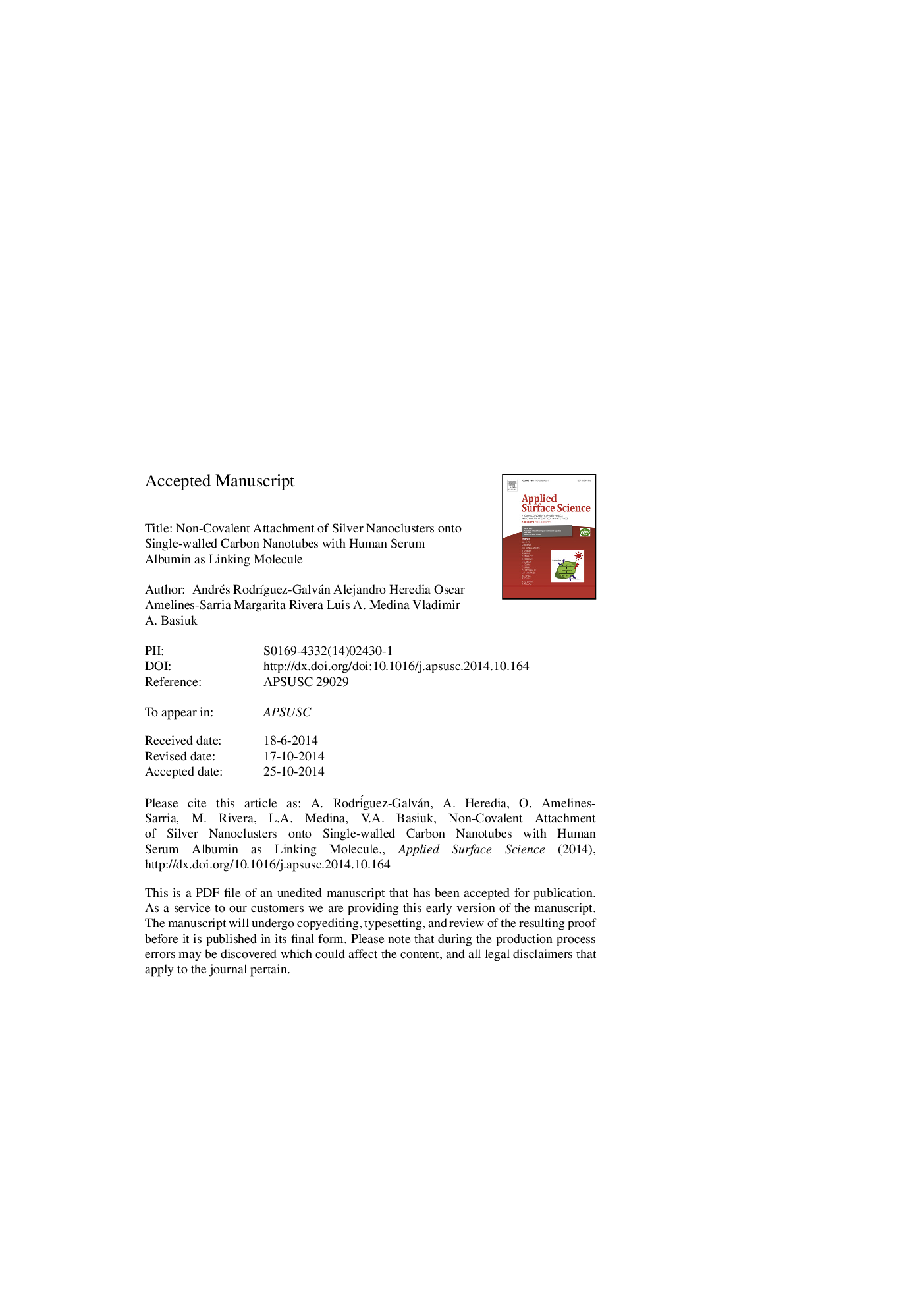| Article ID | Journal | Published Year | Pages | File Type |
|---|---|---|---|---|
| 5359073 | Applied Surface Science | 2015 | 26 Pages |
Abstract
The attachment of silver nanoclusters (AgNCs) onto single-walled carbon nanotubes (SWNTs) for the formation of integrated fluorescence sites has attracted much attention due their potential applications as biological probes and nanovectors in theragnosis. Here, we report the preparation through assembly of fluorescent quasi 1-D nanomaterial based on SWNTs and silver nanoclusters (AgNCs) non-covalently attached to human serum albumin as biological linker. The fluorescent SWNT-AgNCs-HSA conjugates were characterized by atomic force microscopy, high-resolution transmission electron microscopy (HRTEM), high angle annular dark field scanning TEM (HAADF-STEM), fluorescent and UV-vis spectroscopy. The above techniques confirmed that AgNCs were non-covalently attached onto the external surface of SWNTs. In addition, it was observed that the modification did not affect the optical properties of the synthesized AgNCs since the absorption spectra and fluorescence under UV irradiation (λ = 365 nm) remain the same. The effect of the functionalized systems was tested on mammal red blood cells (RBCs) and it was found that their structural integrity was compromised by the conjugates, limiting their biological and medical applications.
Related Topics
Physical Sciences and Engineering
Chemistry
Physical and Theoretical Chemistry
Authors
Andrés RodrÃguez-Galván, Alejandro Heredia, Oscar Amelines-Sarria, Margarita Rivera, Luis A. Medina, Vladimir A. Basiuk,
